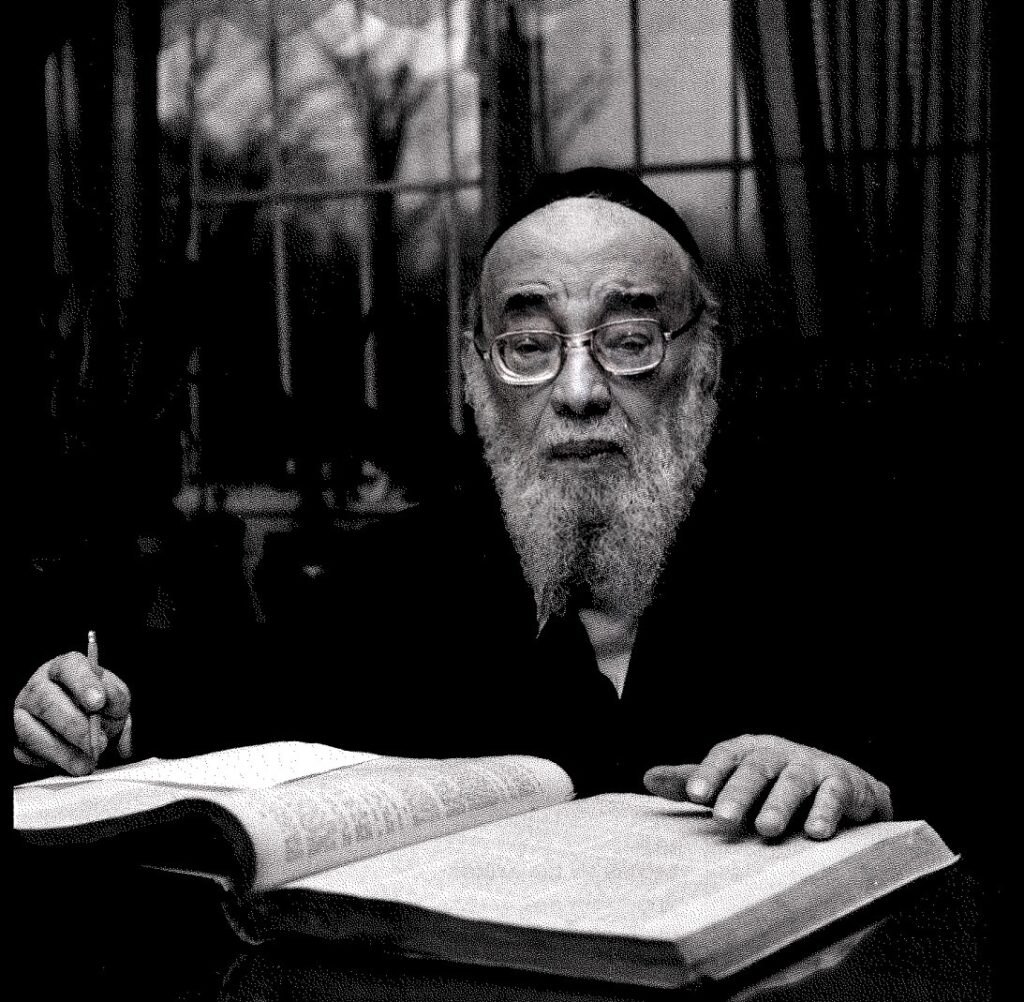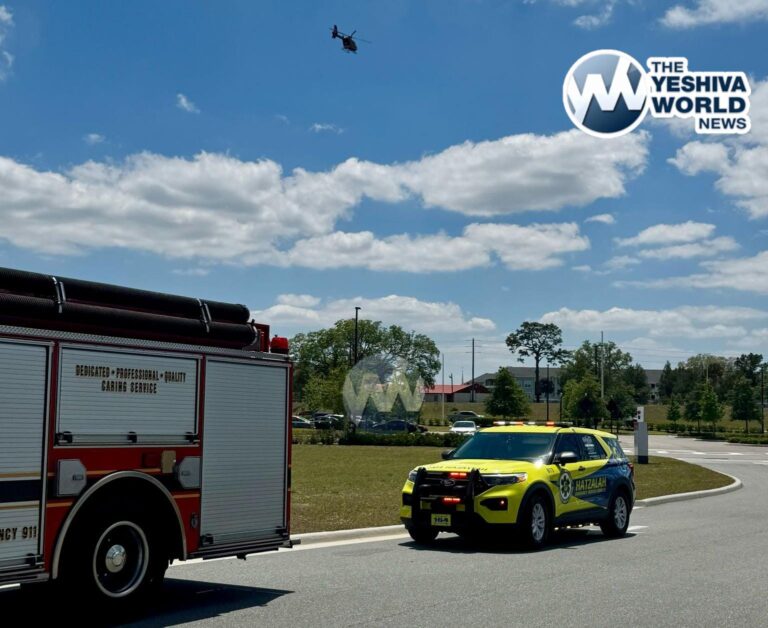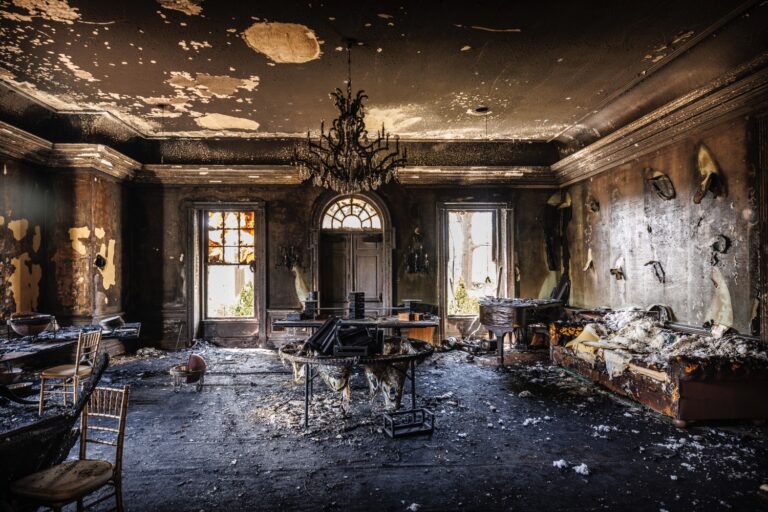By Rabbi Yair Hoffman
This upcoming Shabbos. the 14th of Tammuz marks the 35th Yartzeit of Moreinu HaRav HaGaon Rav Yitzchok Ruderman zatzal, the Rosh Yeshiva of Ner Yisroel. What follows is an account of the Rosh HaYeshiva’s schedule in the Slabodka Yeshiva as well as how the Rosh Yeshiva was kidnapped as a bochur.
Newspapers abound with headlines of Russians taking over Ukraine. But there was another Russian takeover of Ukraine that occurred over 100 years ago in 1919. It was while the Slabodka Yeshiva was in exile in the Ukrainian city of Kremenchug.
1882, was the year that two things happened in in the surroundings of Kovno. The first thing that happened was that Alter of Slabodka, Rav Nosson Tzvi Finkel, had founded the Slabodka Yeshiva, wherein the study of Mussar became a prime focus. The second thing that happened was that construction began on the Kovno system of batteries and fortresses that was ordered by decree of Tsar Alexander II – three years earlier on July 7th, 1879.
That year, in 1882, the Jewish residents of Slabodka did not realize that the construction of the Kovno forts and batteries would eventually lead to disaster. It would cause paranoid Tsarist Russia to force the Jews out of Slabodka and Kovno into exile in the first world war. It would lead them through a harrowing experience of wandering in exile, being jailed both by the Russians and the Germans, and r”l many deaths.
But for those first 33 years, the Yeshiva in Slabodka accomplished the near impossible. It revitalized the Torah world, took the place of Volozhin as one of the leading Yeshivos in Europe. It opened up branches and influenced the other Yeshivos in Lita to introduce a Mussar curriculum.
Rav Ruderman’s general schedule in Yeshiva was as follows:
In the summer, Shacharis took place at 7:00 AM, but in the winter it took place at 8:00 AM. Morning Seder began at 9 AM and in the winter it began at 9:30. First seder lasted until 2:30 PM. Second seder was between 4 PM and 8 PM, but in the winter it changed from 4:15 to 9 PM. Mussar Seder was always between 9:00 PM and 9:30 PM. Night Seder was from after Maariv until 11:00 PM.
On Shabbos, during Bain HaShmashos, there was a period of time set aside form Cheshbon HaNefesh on the entire week that had passed.
In the summer of 1914, war was to erupt. On July 28th, Austria-Hungary declared war on Serbia because of the assassination of Arch Duke Franz Ferdinand one month earlier. Russia came to Serbia’s defense and by the 4th of August, Germany, France and Britain, along with their respective colonial empires entered the war. In November, the Ottoman Empire, Germany and Austria formed the Central Powers. in April of 1915, Italy, Britain, France, Russia and Serbia formed the Allied Powers.
As bizarre as it may sound, Kaiser Wilhelm and Tsar Nicholas II, who were battling each other fiercely, were both grandsons of Queen Victoria of England (in the case of Nicholas II it was through his wife). They had sent letters to each other, each claiming their desire to avert war. But it was not to be. A war that would kill 11 million people began a day later.
The Russian military authorities decided that the Jews were untrustworthy and could not reside next to the Kovno fortress. They were forced into exile. Worse yet, many of the Yeshivas students and Rebbeim were drafted into the Tsarist Russian army.
The Yeshiva and its students, including Rav Ruderman, scattered all over. At this time, the Alter of Slabodka was seeking treatment in Germany for a medical ailment. He was soon captured and jailed as an enemy alien by Germany on account of his being a citizen of Russia. A young fifteen year old Rav Shach was the last one out of the Yeshiva building, not knowing where to go. Rav Moshe Mordechai Epstein, the Rosh Yeshiva, managed to relocate to the city of Rezekne in Eastern Latvia. Rezekne was located some 194 miles northeast of Kovno.
While in Rezekne, Rav Moshe Mordechai made every effort to reconvene the Yeshiva. He needed to raise vast sums of money to get the students and Rebbeim released. He sent letters and telegrams. After consulting with the other members of the Yeshiva’s administration, Rav Moshe Mordechai Epstein decided to relocate the Yeshiva to Minsk about 170 miles from Kovno, and further into Russia.
MINSK
Why was Minsk chosen? It was one train ride away and many of the students either lived there or had found shelter there. Minsk had an established Torah community and would welcome the Yeshiva. Also, most of those whom Rav Moshe Mordechai had contacted expressed the desire to relocate there.
The relative calmness, however, did not last. Minsk was to become the frontline, once again of the battle between Russia and Germany. And Germany was using poison gas.
The Yeshiva administration decided to split the Yeshiva in two. One part, including the Alter, Rav Moshe Mordechai, and Rav Avrohom Grodinsky went to Kremenchug in the Poltava Province, about 418 miles south from Minsk, and a little more to the east. Rav Ruderman went with this group.
The other part, which constituted over 150 of the Yeshiva’s students, including Rav Yitzchok Isaac Sher, the Alter’s son-in-law, and Rav Dov Tzvi Heller, was to remain in Minsk. Soon, however, those that remained in Minsk had to evacuate as well, and joined with the other part in Kremenchug.
Most of the Jewish residents of Kremenchug at the time were devout Chabad Chassidim. They had heard of the famed Yeshiva in Slabodka and went out to greet them when they heard of their arrival. Imagine their shock.
Chabad people, generally, do not shave their beards. With few exceptions, Slabodka talmidim did. It was part of the Alter’s philosophy of Gadlus haAdam. Slabodka Talmidim also dressed in straw hats and fashionable suits and ties. Eventually, however, the townspeople of Kremenchug acclimated quickly after seeing and conversing with the Rosh Yeshiva, Rav Moshe Mordechai Epstein.
Rav Yaakov Ruderman zt”l, the future Rosh Yeshiva of Yeshiva Ner Yisroel in Baltimore, recalled this most dangerous time in his life in the introduction to the Avodas HaLevi. In Kremenchug, Rav Ruderman was kidnapped by a band of lowlifes at gunpoint/ They demanded the sun of 10,000 rubles or they would take his life. He was taken to the home of the Rosh Yeshiva, Rav Moshe Mordechai Epstein, who did not have ant money with him. As they were taking him out to kill him. Rav Epstein ran out and began yelling and screaming to draw a crowd. The ruffians turned to shoot but saw that their case was hopeless as a significant crowd had gathered. Rav Ruderman was released unharmed.
He later, of course, became the Rosh HaYeshiva of Yeshiva Ner Israel in Baltimore and taught thousands of talmidim.
He arrived in the United States in 1931. The plan was to assume a position underhis father-in-law, Rabbi Shefte! Kramer zt”l, who was Menahel Ruchani of the Yeshiva of New Haven. In 1933, he became the Rav of the Tiferes Yisroel Shul in Baltimore. It was there that he opened the Yeshiva, with the permission of the shul. Five talmidim from Cleveland joined him in Baltimore.
Rav Ruderman was one of five talmidim of the Alter who had planted the seeds of Torah in the United States. The five were: Rav Yitzchok Ruderman, of course, Rav Aharon Kotler zt”l, Rav Yitzchok Hutner zt”l, Rav Dovid Leibowitz zt”l, and Rav Yaakov Kamenetsky zt”l, Rav Ruderman’s cousin.
Many of Rav Ruderman’s talmidim entered into chinuch positions across the nation. Today, the United States is a very different Torah world on account of this remarkable tzaddik and gaon. yehei zichro boruch.
The author can be reached at [email protected]











